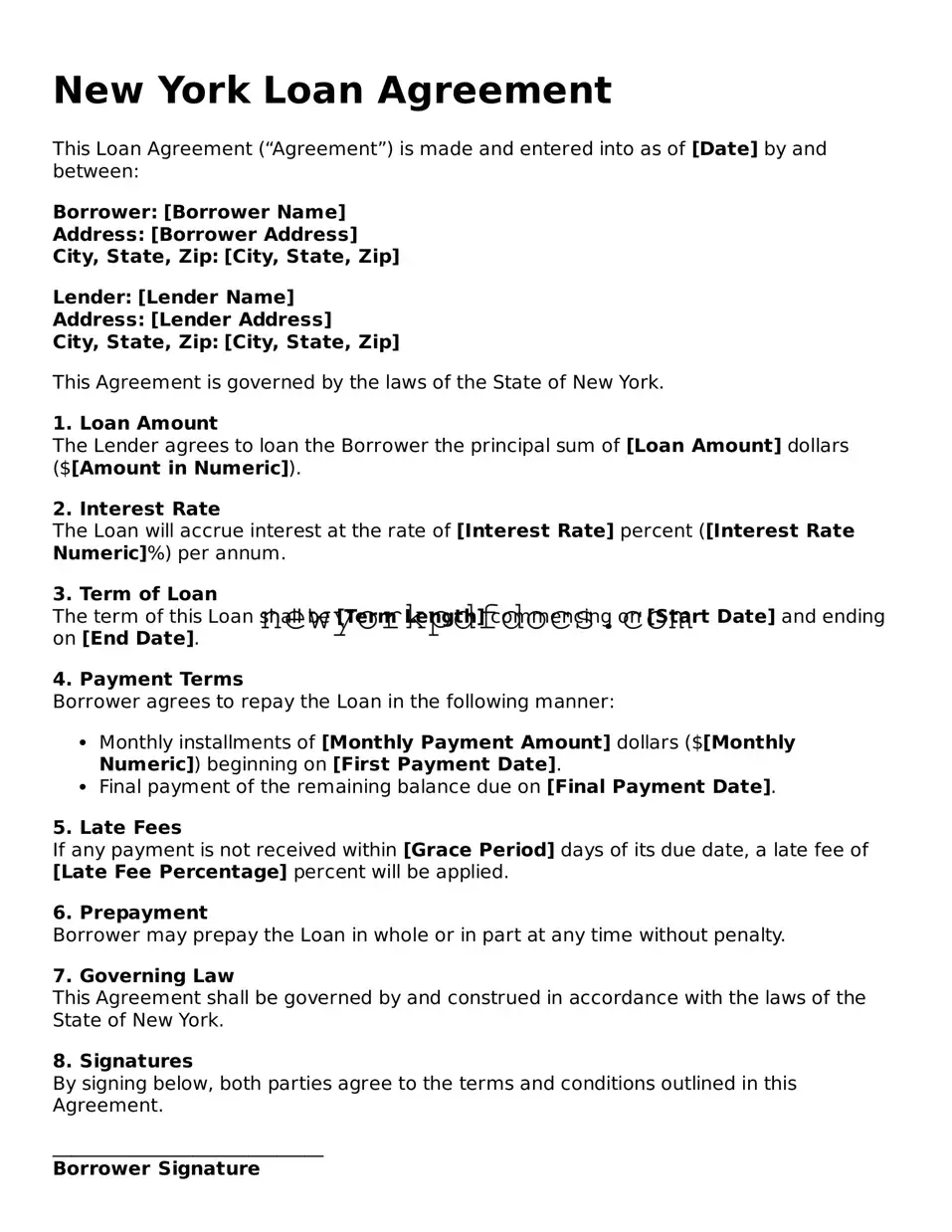New York Loan Agreement
This Loan Agreement (“Agreement”) is made and entered into as of [Date] by and between:
Borrower: [Borrower Name]
Address: [Borrower Address]
City, State, Zip: [City, State, Zip]
Lender: [Lender Name]
Address: [Lender Address]
City, State, Zip: [City, State, Zip]
This Agreement is governed by the laws of the State of New York.
1. Loan Amount
The Lender agrees to loan the Borrower the principal sum of [Loan Amount] dollars ($[Amount in Numeric]).
2. Interest Rate
The Loan will accrue interest at the rate of [Interest Rate] percent ([Interest Rate Numeric]%) per annum.
3. Term of Loan
The term of this Loan shall be [Term Length] commencing on [Start Date] and ending on [End Date].
4. Payment Terms
Borrower agrees to repay the Loan in the following manner:
- Monthly installments of [Monthly Payment Amount] dollars ($[Monthly Numeric]) beginning on [First Payment Date].
- Final payment of the remaining balance due on [Final Payment Date].
5. Late Fees
If any payment is not received within [Grace Period] days of its due date, a late fee of [Late Fee Percentage] percent will be applied.
6. Prepayment
Borrower may prepay the Loan in whole or in part at any time without penalty.
7. Governing Law
This Agreement shall be governed by and construed in accordance with the laws of the State of New York.
8. Signatures
By signing below, both parties agree to the terms and conditions outlined in this Agreement.
_____________________________
Borrower Signature
[Print Name]
_____________________________
Lender Signature
[Print Name]
_____________________________
Date
